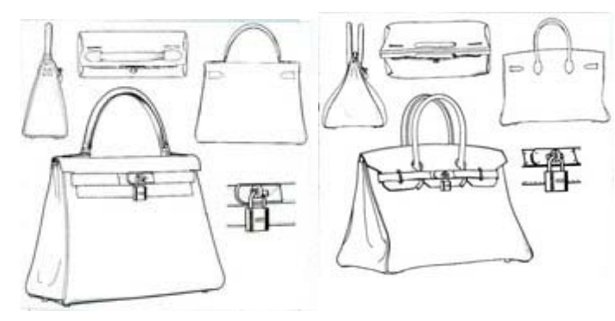The Italian Supreme Court rules on the 3D trademarks of Hermès bags and the value of surveys
The Italian Supreme Court recently ruled on the protection of the shapes of the Hermès Kelly and Birkin bags as three-dimensional trademarks (decision no. 30455/22). In essence, Hermès commenced trademark infringement proceedings against a company that marketed unauthorised copies of its bags. The latter defended itself by arguing that the Hermès trademarks were void due to a lack of distinctive character, since their shapes were standardised on the market, and therefore its marketing of copies was legitimate.
As already mentioned here in this blog, the Florence IP Court and Court of Appeal ruled against Hermès, granting the opposing party’s counterclaim for the declaration of the nullity of the trademarks (decisions n. 3442/16 and n. 540/18). However, the Supreme Court did not share this conclusion, annulled the appeal decision, and sent the case back to the Florence Court of Appeal for a new trial before a different panel of judges.
With reference to its decision, the Supreme Court first of all censures the reasoning of the Court of Appeal which maintained that it was up to Hermès to prove the acquired distinctiveness of its trademarks, without first verifying that the counterparty - who had counterclaimed the nullity of the trademarks - had demonstrated the absence of original distinctiveness. The Supreme Court recalls that registered trademarks enjoy a presumption of distinctiveness, hence it is up to whoever claims their nullity to demonstrate that they do not meet the distinctive requirements.
Secondly, the Supreme Court disputes the assessment of the absence of distinctive character made by the Court of Appeal: "Its statement that the shapes of the Kelly and Birkin bags are "standardised" is apodictic, as it does not explain the reasons for the lack of original and acquired distinctive character". On the contrary, the Supreme Court points out, "the judges should have ascertained the existence of the specific and autonomous hypothesis of the non-registrability of the shape trademarks envisaged by the law".
Finally, the Court expresses its position on the value of evidence of distinctive character, with particular reference to opinion polls: "the data resulting from public opinion polls are clues, not in themselves conclusive, which must be examined in relation to the overall degree of technical-scientific reliability of the same, and must be accompanied by other significant, precise and concordant indications. (…) It is possible to obtain evidence of the distinctive character (of the shape) of the mark amongst consumers from different - documentary and non-documentary - sources”.

